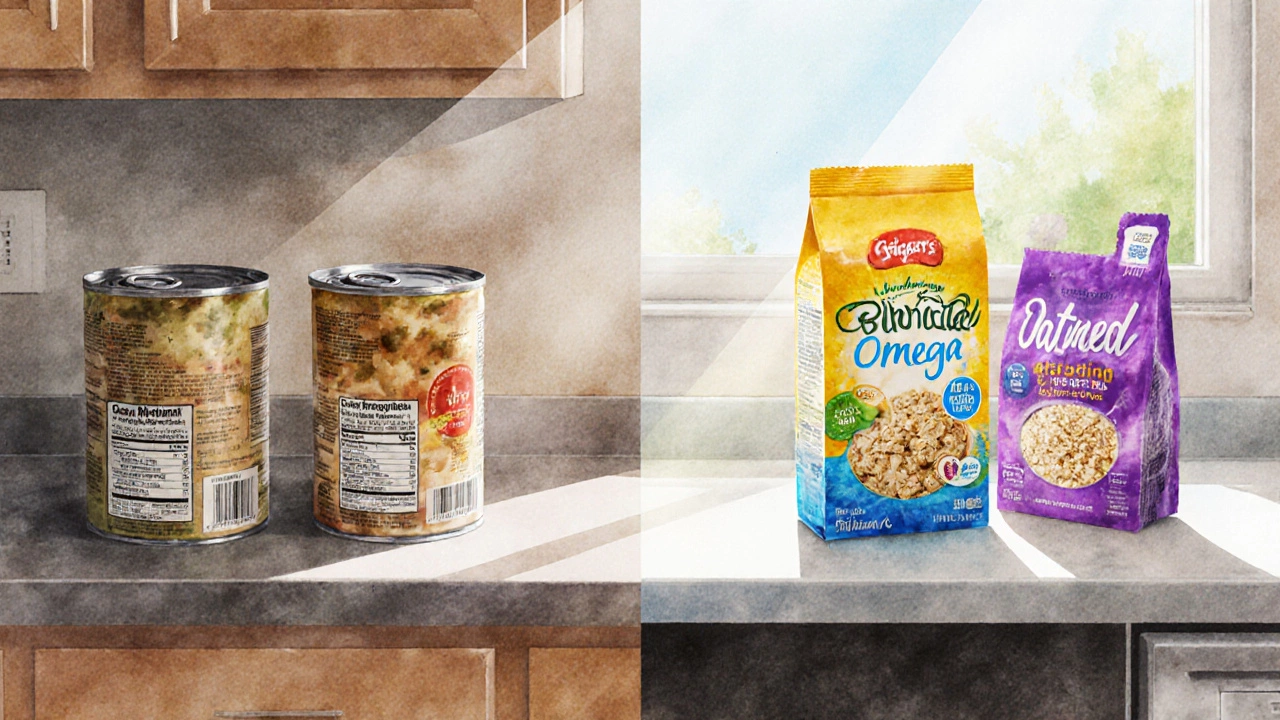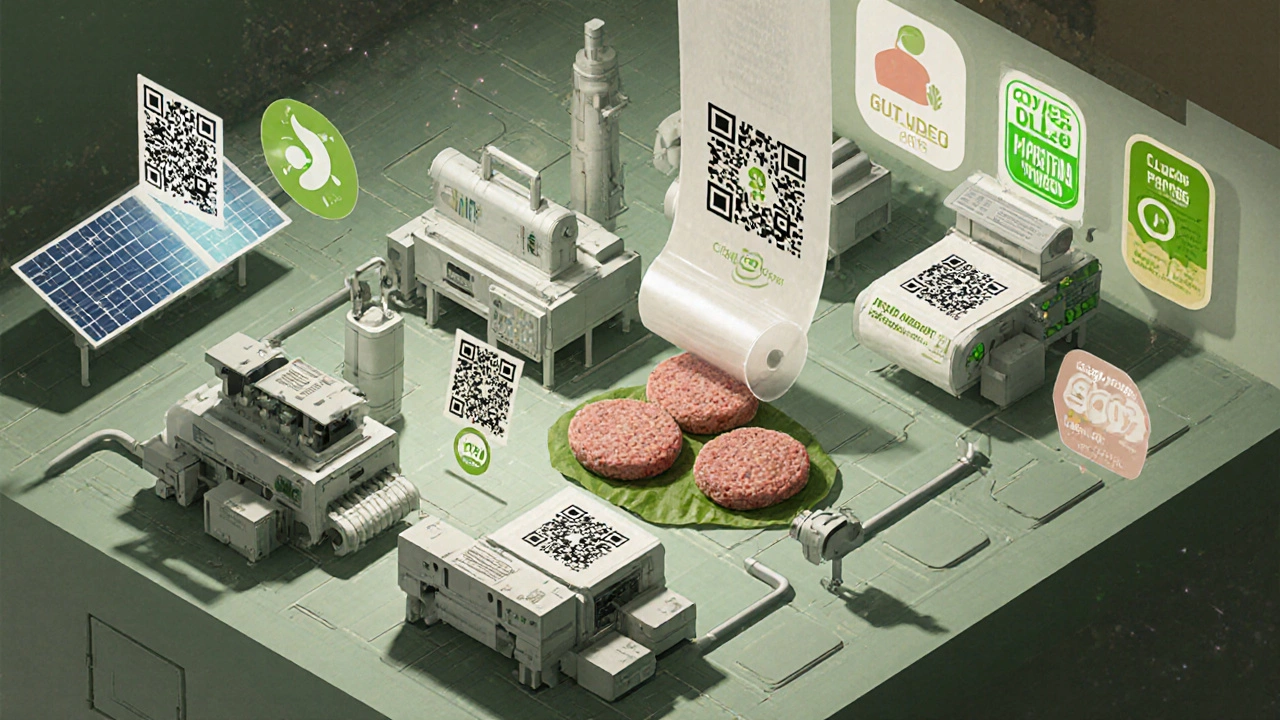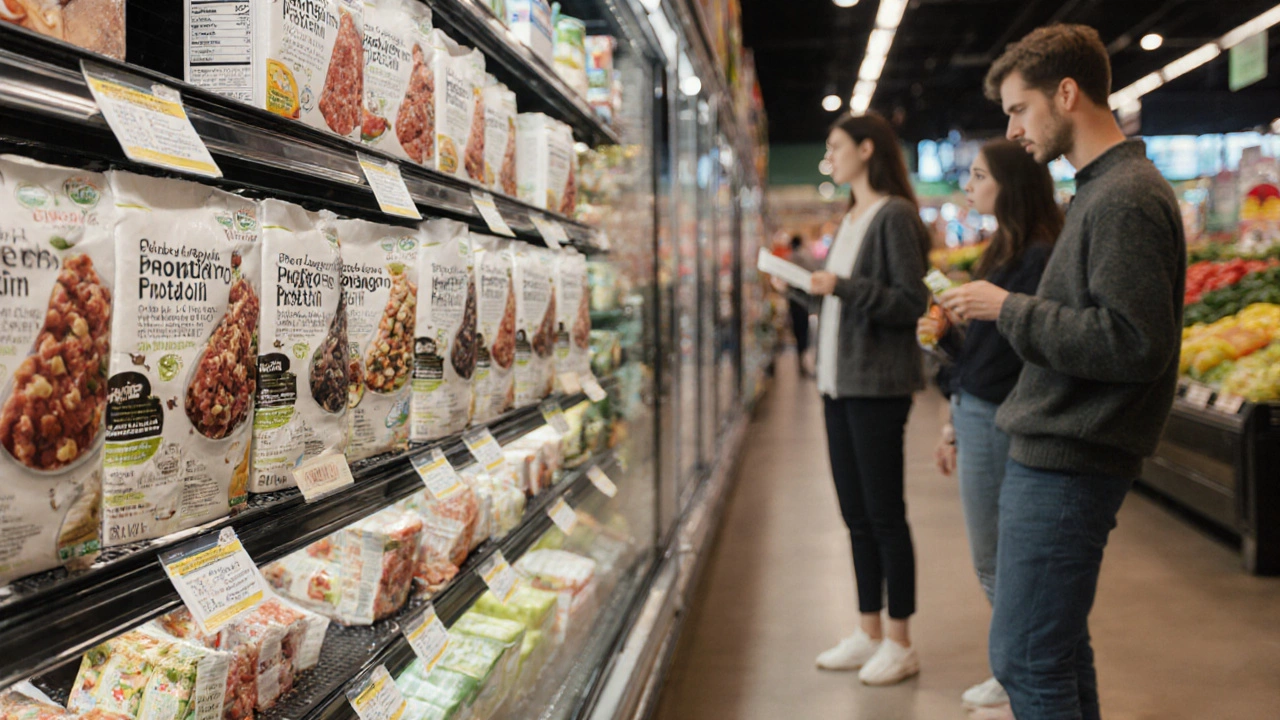When you walk into any grocery store today, over 70% of the items on the shelves are processed. It’s not just snacks and frozen dinners-processed foods now include everything from plant-based meats to protein-packed oatmeal bowls. The demand isn’t slowing down. In fact, global sales of processed foods hit $1.8 trillion in 2024, with convenience, shelf life, and nutrition labeling driving the change.
Why Processed Foods Are More Popular Than Ever
People aren’t eating processed foods because they’re lazy. They’re eating them because life is faster. Two-income households, gig work schedules, and the rise of remote work mean meals need to be quick, reliable, and easy to store. A 2024 survey by the Food Marketing Institute found that 68% of UK households buy ready-to-eat meals at least three times a week. That’s up from 49% in 2020.
It’s not just about time. Processing has gotten smarter. Brands now use high-pressure processing (HPP) to kill bacteria without heat, keeping nutrients and flavor intact. Others use vacuum-sealed packaging with oxygen absorbers to extend freshness without preservatives. Consumers notice. They’re trading old-school canned soups for cold-pressed, refrigerated soups with clean labels.
The Top 5 Most Demanded Processed Foods in 2025
Not all processed foods are created equal. Some are just sugar and salt in disguise. Others are engineered to meet real nutritional needs. Here are the five most demanded types right now:
- Plant-based meat alternatives - Brands like Beyond Meat and Impossible Foods dominate shelves. Sales grew 22% in the UK last year alone. People aren’t just vegetarians buying these-73% of buyers are flexitarians looking to reduce red meat without giving up texture or taste.
- Ready-to-eat protein bowls - Think quinoa, grilled chicken, roasted veggies, and tahini dressing, all pre-portioned and refrigerated. These meals hit the sweet spot: high protein, low sugar, no reheating required. Meal prep companies like Mindful Chef and HelloFresh now sell over 2 million of these bowls monthly across Europe.
- Fortified breakfast cereals and oatmeal packs - Gone are the days of sugary cornflakes. Today’s top sellers include oatmeal with added fiber, vitamin D, and omega-3s. Brands like Oatly and Weet-Bix now offer single-serve, microwaveable pouches with no added sugar. Parents buy them. Athletes buy them. Even office workers grab them as a desk snack.
- Refrigerated probiotic snacks - Yogurt, kefir, kimchi, and fermented pickles are no longer niche. They’re mainstream. The UK’s probiotic snack market hit £420 million in 2024. Consumers want gut health benefits without swallowing pills. Brands like GT’s Living Foods and Yeo Valley now offer ready-to-eat probiotic smoothies and snack packs with live cultures clearly labeled.
- Shelf-stable plant-based milk alternatives - Almond, oat, soy, and pea milk aren’t just for vegans anymore. Oat milk alone accounts for 40% of all plant-based milk sales in the UK. What’s new? Brands now use ultrafiltration to remove excess water, making the milk thicker, creamier, and better for coffee. Shelf life has jumped from 7 days to 60 days without refrigeration thanks to aseptic packaging.
What’s Driving Demand? Three Key Trends
Three forces are reshaping what processed foods people actually want:
- Clean labels - Consumers don’t want E-numbers they can’t pronounce. Products with fewer than five ingredients see 3x higher sales growth than those with long ingredient lists. “No artificial preservatives” is now a bigger selling point than “low fat.”
- Nutrition transparency - Apps like Yuka and Open Food Facts let shoppers scan barcodes and instantly see sugar, salt, and additive scores. Brands that hide behind vague terms like “natural flavors” are losing shelf space. Those that list exact amounts of protein, fiber, and micronutrients are winning.
- Convenience with quality - People don’t want cheap food. They want food that’s fast but still tastes homemade. That’s why frozen lasagna made with real ragù and fresh herbs outsells the one with powdered cheese. It’s why cold-brewed coffee in a can sells better than instant.

What’s Not Selling Anymore
Not all processed foods are thriving. Some categories are shrinking fast:
- Traditional canned soups with high sodium and artificial thickeners
- Sugary breakfast cereals with cartoon mascots
- Refrigerated dough products with hydrogenated oils
- Low-fat yogurts loaded with artificial sweeteners
These aren’t just unpopular-they’re being actively avoided. A 2025 study by the University of Birmingham found that 61% of shoppers now read ingredient lists before buying, even if they’re in a hurry. If they see high-fructose corn syrup or sodium nitrate, they put it back.
How Food Processing Units Are Adapting
Manufacturers aren’t just reacting-they’re redesigning. Smaller processing units in the UK are now investing in modular, flexible lines that can switch from making plant-based burgers one day to probiotic snacks the next. Automation has dropped costs, but the real innovation is in packaging.
Many are switching from plastic to compostable cellulose films. Others are using nitrogen flushing instead of vacuum sealing to preserve freshness without plastic. One Midlands-based processor cut its carbon footprint by 38% in 18 months by switching to solar-powered HPP units and local sourcing for vegetables.
It’s not just about efficiency anymore. It’s about trust. Consumers want to know where their food comes from, how it’s made, and what’s in it. Brands that can show that-through QR codes linking to farm videos, batch numbers for traceability, or third-party certifications-are the ones growing.

What This Means for You
If you’re buying processed foods, you’re not stuck with junk. You have more power than ever. Look for:
- Short ingredient lists (five items or fewer)
- Protein content over 10g per serving
- No added sugars listed among the first three ingredients
- Refrigerated over shelf-stable when possible (means fewer preservatives)
- Brands that name their suppliers or show production locations
Processed doesn’t have to mean unhealthy. It just means it’s been changed from its raw state. The best processed foods now do that to make nutrition easier, not harder.
Are all processed foods bad for you?
No. The term "processed" covers everything from frozen peas to energy bars. Minimally processed foods-like pre-washed greens, canned beans, or pasteurized milk-retain most of their nutrients and are part of a healthy diet. The problem is ultra-processed foods: those with added sugars, artificial flavors, and chemical preservatives. Look at the ingredient list. If it reads like a chemistry textbook, it’s probably best to skip it.
What’s the difference between processed and ultra-processed foods?
Processed foods are altered for safety or convenience-think cheese, bread, or canned tuna. Ultra-processed foods are made mostly from industrial ingredients: high-fructose corn syrup, hydrogenated oils, hydrolyzed proteins, and artificial colors. They’re designed to be hyper-palatable and addictive. Examples include sugary cereals, packaged snacks, and instant noodles. The NOVA classification system, used by the WHO, separates them into four groups. Stick to Group 1 (unprocessed) and Group 2 (minimally processed) when you can.
Why are plant-based meats so popular now?
They’ve gotten better. Early versions tasted like cardboard. Now, companies use pea protein, coconut oil, and beet juice to mimic the texture, fat marbling, and even the "bleeding" effect of real meat. They’re not just for vegans-most buyers are meat-eaters cutting back for health or environmental reasons. A 2025 UK survey showed 58% of plant-based meat buyers say they eat less beef because of these products.
Is refrigerated processed food better than shelf-stable?
Generally, yes. Refrigerated products often use fewer preservatives because cold slows bacterial growth. Shelf-stable items rely on heat processing, additives, or vacuum sealing to last months. If you’re choosing between a refrigerated probiotic yogurt and a shelf-stable version, the refrigerated one likely has more live cultures and fewer stabilizers. But shelf-stable options are better for emergencies, travel, or pantry storage.
How can I tell if a processed food is healthy?
Check three things: the ingredient list, the nutrition panel, and the serving size. If sugar, oil, or salt is in the top three ingredients, it’s probably not a healthy choice. Look for at least 3g of fiber and 10g of protein per serving. Avoid anything with "hydrogenated," "high-fructose corn syrup," or "artificial flavors." And always compare serving sizes-some products list nutrition for half a package to make numbers look better.
What’s Next for Processed Foods?
The next wave is personalization. Startups are testing AI-driven meal kits that adjust recipes based on your gut microbiome or blood sugar levels. Others are using blockchain to track every ingredient from farm to shelf. In five years, your fridge might recommend a protein bowl because your sleep tracker showed you need more magnesium.
For now, the best advice is simple: don’t avoid processed food. Choose it wisely. The most demanded foods aren’t the ones with the flashiest packaging-they’re the ones with the clearest labels, the fewest additives, and the most honest sourcing.
